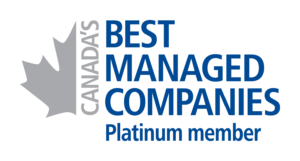7 Tips to Boost Supply Chain Efficiency

By Steve MacKenzie
Company profits can increase if you achieve sufficient savings in supply chain costs, accomplished through efficiencies.
Firstly, it is paramount to understand the dynamics of your customer base so that you can design your service offering to meet their needs at the most reasonable cost. Failure to identify your customers’ needs adequately, results in supplying the wrong service at the wrong cost. The danger in this is your customers will leave you or you may go bankrupt—or both.
- Client Partnering or Customer Service:
Do what is right by the customer. Provide the customer with what they need rather than incurring costs for elements in which the customer does not see any value. As an example re-evaluating the freight transit service offered to your customers can save costs. Some possible questions you can ask yourself are: Do some customers consistently need next day service or team transit service. Can your consignees do more advanced inventory planning or purchasing to allow for more standard transit times for delivery over the long term?
Another example is avoiding penalties and settlements to customers due to service issues. A number of penalties and settlements for customer complaints can be eliminated by identifying root causes, and implementing corrective action plans to ensure the issues don’t reoccur.
When customers see value in a particular level of service, they will be happy to pay for it when it helps improve their businesses. When customer service is aligned to customer requirements the results are more profits, and more customer loyalty.
- Outsourcing
Eighty-five percent or more of businesses outsource some part of their supply chain operation or management. The two functions that are outsourced most often are warehousing and transportation. A common reason for this is that management believes the company will save money by outsourcing. This may not always be the case, of course, but cost savings can come about if the service provider is more efficient or skilled in performing the required services than the company is.
Besides saving money, other reasons include:
- The service being outsourced is not core to the business and is a “distraction” for management.
- Operations are rapidly expanding, and outsourcing provides an effective means of quickly gaining access to more space, technology, or other resources.
- The business needs access to specialized skills, equipment, or technology and does not want to invest capital in those assets directly.
A successful outsourcing relationship is characterized by both parties getting what they want through a healthy and proactive partnership. As the customer, you get consistent service at a cost within expectations and the possibility of a lower cost, and your service provider also achieves expected profit margins.
- Transparency
Waste, discrepancies and even shrinkage are continuous supply chain frustrations that can be fixed with the right ERP system. A big issue with inventory management is balancing the physical inventory count with the system’s data. From time to time due to manual input, products or units are not accounted for or simply disappear. Increased transparency in Supply Chain Management is critical to reducing unexplained inventory and financial losses.
- Real Time Access
Supply chain management is dependent on accurate and timely data and information. When real-time reports are available 24/7 they provide valuable insight into the decision making processes of your business. EDI, ERPs, WMS, TMS and other software are important tools to allow both users and management to instantly access inventory, purchasing and production data for making real time critical decisions.
- Continuous Improvement
Establishment of KPIs by customers is employed as a method of requiring their 3PL to continually look at ways to improve their performance as well as improve efficiencies and reduce costs.
KPIs also can be used by customers as a tool even if they are not in the same time zone to monitor the 3PL’s performance on a daily, weekly or monthly basis. Similarly the 3PL can employ the KPIs to provide proof to their clients that they are meeting or exceeding requirements.
- Communicate Cost Awareness
Within the supply chain there are various mangers, which due to their own responsibilities and time constraints, may be unaware of their other department’s managers’ expenses.
For example, ERP systems are often integrated with different business areas, such as HR, finance, IT, etc. An ERP system will reduce excessive paperwork and invoice errors. ERP systems are integrated with EDI and EFT (Electronic Funds Transfers), which will significantly decrease payment administration and associated wait times costs. This will encourage and improve communication and strategies for streamlining processes across departments for leaner management.
- Virtual integration
Maintaining a flexible supply chain can be a major challenge to manufacturers, retailers and distributors in today’s increasingly competitive and uncertain environments. Virtual integration represents partnerships by integrating a set of partners who benefit from value propositions.
One of the key elements of a successful supply chain is to stick to what you do best, which are your core competencies—and leave the rest to others. When outsourcing, firms should seek out a win-win situation with its service providers.
If you found this helpful, check out a possible solution at:
or contact us:
https://asldistribution.com/contact-us/


